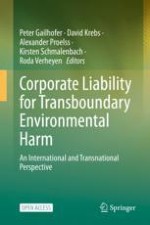For obvious reasons, space activities are generally classed as ultra-hazardous endeavours, i.e. they are inherently dangerous, not only for the various vehicles leaving the Earth atmosphere, but also the cargo such vehicles carry, be it human or otherwise. Additionally, space activities generate environmental
risks
in outer space
that can, at times, impact the Earth as what goes up, must inevitably come down. The hazards of spaceflight come from multiple sources, including, but not limited to, the technology used (e.g. nuclear power sources) and the hostile nature of outer space
which is difficult to reach, difficult to survive in and difficult to return from.
1 This inherent danger has been tragically highlighted not only by the shuttle disasters involving Challenger (1986) and Columbia (2003) but also by the vast field of radioactive debris left in Canada after the uncontrolled re-entry of the Soviet satellite Cosmos 954 in 1977. The latter accident exemplifies that ultra-hazardous activities
require liability rules because when something goes wrong, the consequences can be significant for any injured parties.
2 However, it cannot be said that Canada’s contamination by Cosmos’ debris triggered the international agreement on a contractual liability regime for space activities, rather that was something born from the early awareness of the United Nations Committee on the Peaceful Use of Outer Space (COPUOS), established by the UN General Assembly in 1958.
3 Indeed, the international discussion on establishing a proper space liability regime was a direct consequence of the space race between the USA and USSR which started in 1955 when the US announced its intention to launch artificial satellites. The USSR, however, was the first nation to successfully launch an orbital payload using the unmanned Sputnik 1 satellite on 4 October 1957. Unfortunately, disagreements between the two major space-faring nations and cold-war enemies hampered reaching any agreement on a comprehensive space liability regime until the General Assembly, in 1963, adopted Resolution 1962 (XVIII), proclaiming the legal principles governing the activities of States
in the exploration and use of outer space
, a declaration that included a principle on liability (para. 8).
4 The UN GA’s Declaration of Principles is the predecessor of today’s Outer Space
Treaty, which was agreed upon by the General Assembly in 1966
5 and entered into force in October 1967, almost exactly 10 years after Sputnik’s first orbital flight.
6 However, in light of the difficult relationship between the USSR and the USA, it was clear from the outset that the treaty’s rather rudimentary responsibility and liability provisions (Article VI and VII) needed to be both further specified and supplemented, a process to be addressed in the “Convention on International Liability for Damage Caused by Space Objects”. Work on this Liability Convention built on proposals made by the USA
7 as early as 1962 and by Belgium and Hungary in 1964.
8 Within the institutional framework of COPUOS, a compromise on the space liability regime was finally found in 1971 and subsequently adopted by the General Assembly as Resolution 2777 (XXVI).
9 The Liability Convention entered into force in September 1972 as
lex specialis to Article VII of the Outer Space
Treaty for those States, which are a States party to the Convention.
10 To date, 96 States have ratified the Liability Convention and four international organisations
11 have accepted all the rights and obligations under it. By way of comparison, 109 States are party to the Outer Space
Treaty. There is, unsurprisingly, a close link between the two treaties: the understanding of the elements in Article VII Outer Space
Treaty is informed by corresponding provisions of the Liability Convention and
vice versa, given that both treaties have their origin in the same negotiation process and drafting history. Having said that, the Liability Convention was considered by its drafters as a supplementary treaty, designed to expand upon the provisions of the Outer Space
Treaty.
12